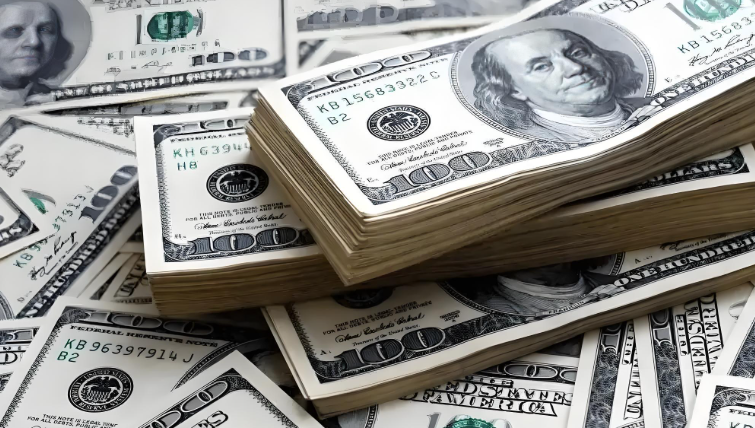Dollar Index Faces Pressure and Closes Lower
Advertisements
As the European Central Bank (ECB) approaches its policy meeting on January 30, uncertainty looms over whether an interest rate cut is on the horizon. Robert Holzmann, the Governor of the Austrian National Bank and a member of the ECB Governing Council, highlighted this ambiguity during a recent statement. He expressed concerns regarding inflation in the Eurozone, stating, "I don't know what will happen in two weeks. I believe rates cannot simply continue to decline in a straight line, especially given the recent challenges we are facing with inflation." Holzmann pointed out that core inflation remains stubbornly high, hovering around 3% rather than the targeted 2%. The ongoing difficulties in the energy sector further exacerbate these inflationary pressures.
Nevertheless, Holzmann remained hopeful, emphasizing that the ECB aims to meet its inflation targets by the end of 2025. Conversely, another ECB Governing Council member, Olli Rehn, who is also the Governor of the Bank of Finland, predicts that interest rates in the Eurozone may reach levels that no longer hinder economic activity by mid-2025. Rehn had previously articulated that, in light of stabilizing inflation and a weakening economic outlook, further rate cuts would be justified. The direction appears clear, yet the magnitude and pace of any reductions will rely heavily on forthcoming economic data.
In the realm of monetary policy, the ECB's Chief Economist, Philip Lane, recently conveyed that the central bank might have room to ease its stance this year, but a "middle ground" must be identified—one that avoids recession while not delaying inflation control. This delicate balancing act presents a significant challenge for policymakers who must navigate ongoing economic volatility.
On the other side of the Atlantic, the U.S. labor market exhibited notable trends with the release of significant data by the Bureau of Labor Statistics. December's Producer Price Index (PPI) registered a year-on-year increase of 3.3%, marking the highest rise since February 2023. While this figure exceeded the previous month’s increase of 3%, it nonetheless fell short of the anticipated 3.5% uplift. When examining core PPI—excluding food and energy—the year-on-year increase also reflected a growth of 3.5%, again echoing the highest rate since earlier in the year but below expectations of 3.8%.

Moreover, the month-on-month analysis revealed a more subdued performance. The PPI increased by only 0.2%, a drop from November's increase of 0.4%, which was also below market expectations. Excluding food and energy from the analysis, core PPI remained stagnant at 0%, failing to meet the forecasted 0.3% rise and underperforming against the prior month's increase of 0.2%. Notably, when food, energy, and trade services are excluded, the PPI still managed a modest gain of 0.1%. Analysts interpret the December PPI data as a sign of easing inflation pressures in the U.S. by the end of the previous year; however, they caution that this alleviation may not suffice to trigger a short-term interest rate cut by the Federal Reserve.
As this economic landscape unfolds, several key figures across Europe and North America warrant close observation. In the United Kingdom, attention will turn to the December CPI annual rate, retail price index, and input PPI figures, which will provide insights into inflation dynamics within the economy. Additionally, Germany will disclose its annual GDP rate for 2024, while in the U.S., the focus will be on the December CPI and the January manufacturing index from the New York Federal Reserve. Canada will also release its November manufacturing sales figures, adding to the richer tapestry of economic data set to influence market movements.
Turning to currency movements, the U.S. dollar index experienced a tumultuous trading session, registering slight declines in the daily charts as it trades around 109.20. Several factors contributed to this volatility, prominently the profit-taking behavior observed amongst investors. After a notable bullish phase, many opted to realize gains, triggering a wave of sell-offs that subsequently pressured the dollar's value downwards. Furthermore, the disappointing PPI figures emanating from the U.S. only compounded the dollar's woes, revealing that inflationary pressures at the production level did not meet market anticipations, markedly affecting investor confidence in the currency.
Looking ahead into today's trading environment, participants should monitor the dollar index closely, particularly the resistance at around 109.70, while keeping an eye on the crucial support level near 108.70. This overview not only depicts the evolving dynamics of the dollar but also underscores the interlinked nature of global economic indicators and investor sentiment, which are crucial for making informed trading decisions.
In the currency pair dynamics, the euro fluctuated upwards yesterday, ending the trading day marginally higher as it hovers near 1.0300. Factors supporting this ascent include short-covering among traders and the continued decline of the dollar index amid profit-taking and disappointing economic data. In tandem, optimistic remarks from ECB officials lent further support to the euro's gains. As the day unfolds, attention shall turn to the resistance level around 1.0400, with support anticipated near 1.0200.
The British pound mirrored the euro's performance, showcasing fluctuations while concluding the day with a slight uptick at approximately 1.2210. Similar to the euro, short covering helped prop up its value, supported by the dollar's weak showing. However, prevailing anxieties concerning the UK economy and prospects of potential interest rate cuts by the Bank of England may restrain the pound's potential for a notable rebound. The day ahead will focus on the resistance level around 1.2300, while key support rests near 1.2100.
Leave A Comment